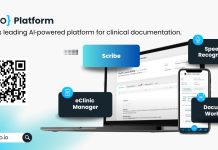The future of healthcare is digital. While the increasing use of technology will bring opportunities, it will also create new risks for patient safety. Nick Woodier from the Health Services Safety Investigations Body reflects on the implementation of various technologies in healthcare and their impact on patient safety
Embracing the use of information technology (IT) systems to support the delivery of healthcare has long been an aspiration of the National Health Service. Recently, this aspiration has again been highlighted by the UK Government’s publication ‘10 Year Health Plan for England: fit for the future.’ (1) While the benefits of IT systems should evidently be sought, going digital can also increase the risk of harm to the very people those systems are meant to benefit. Those risks need to be understood and managed.
At the Health Services Safety Investigations Body (HSSIB), we undertake independent patient safety investigations in England. Several of these investigations have focused on IT systems and how they have contributed to patient harm. Examples of systems considered in our investigations include electronic patient records (EPRs) in acute and mental health hospitals, and general practice and community care; (2,3) electronic prescribing and medicines administration systems (ePMA) in paediatrics, acute hospitals and general practice; (4,5) and tools for online consultation in general practice. (6)
Benefits of going digital
Increased use of IT systems in the delivery of healthcare has the potential to benefit patients and staff:
- EPR systems for the management of patient records can help provide safe, holistic and continuous patient care through the sharing of information that allows coordination between services. EPRs may also help make care processes more efficient and save time for staff who face significant workloads.
- Medicine systems (ePMA) can help reduce errors at the points of prescription, dispensing and administration, and support the efficient management of people’s medicines.
- Online consultation tools – software that allows people to engage digitally with their general practice – can benefit patients by increasing choice, flexibility and access. They may also benefit practices by helping to manage demand, freeing up staff capacity, and collecting clinical information to help with care decisions.
For the benefits of these IT systems and others to be realised, they need to be appropriately designed and their implementation needs to consider the realities of the worlds within which they are being integrated. Unfortunately, where best practices for design and implementation have not been achieved, people may be harmed.
Risks to patient safety
Our investigations have found examples where the design and implementation of IT systems have contributed to patient harm. From a design perspective, where systems have lacked functionality or been unable to link with other systems to seamlessly pass information (interoperability), they have created situations where patients have missed out on care or received the wrong care. Examples we have explored included where a child was inadvertently prescribed ten times the intended dose of a blood thinning medicine via an ePMA; (4) where an older person discharged from hospital received an overdose of diabetes medicine when a community nursing team’s EPR had not been updated with the changes made in the hospital; (2) and where a patient’s collapse on a mental health ward may have been avoided if EPRs in the mental health hospital and local acute hospital had shared information about abnormal test results. (3)
Where IT systems have been implemented without a complete understanding of how they interact with people, processes and other systems, patients have also been harmed. Where online consultation tools had been introduced into general practice, our investigation saw that limited engagement with local patients had impacted their use of the tools. In some areas, patients believed they could no longer access care if they could not or would not use a laptop or smartphone; this resulted in some going without care. (6) Practices told HSSIB that they had limited support when attempting to manage the complex project that is implementing an online consultation tool and had limited understanding of their obligations under the Public Sector Equality Duty. (7)
Supporting safe implementation
Safe implementation of IT systems first requires a system that is 1) capable of achieving what is being asked of it, and 2) designed to meet the needs and requirements of those who are intended to use it. User-centred design requires an understanding of the explicit needs of users by system developers and those configuring systems for use in practice. Limited user involvement can result in systems that do not provide needed functionality or that cannot be used by a range of different people. (2, 4, 6) Accessing a truly representative range of users when developing and configuring IT systems is a fundamental requirement for safe and effective digital healthcare.
Implementation then requires recognition of the context within which the IT system is to be implemented. That context is ‘sociotechnical’, in that it includes interacting work processes, other technology, organisational structures and humans. Implementation of a new system is complex because the very context into which it is being integrated is complex and often unpredictable. Achieving successful implementation requires the identification of potential risks and their mitigation. (4, 6)
The future of healthcare is digital, but embracing technology must prioritise the safety of patients. To do this effectively, the principles of safety management must be considered, and risks to patient safety must be proactively managed as much as is practicable. (8) Fundamentally, those involved with the selection and implementation of IT systems need to ask – What does the system need to achieve, and is it capable? Who are the users of the IT and what are their needs? How will the system interact safely with people, processes and other technology within the context in which it is being integrated? And, how will the system continue to keep patients safe in a complex environment?
References
- 10 Year Health Plan for England: fit for the future
- HSSIB – electronic communications on patient discharge from acute hospitals
- HSSIB – safe and therapeutic care for adults in mental health inpatient settings
- HSSIB – weight-based medication errors in children
- HSSIB – electronic prescribing and medicines administration systems
- HSSIB – digital tools for online consultation in general practice
- Equality and Human Rights Commission – The Public Sector Equality Duty
- HSSIB – Safety management systems: an introduction for healthcare











